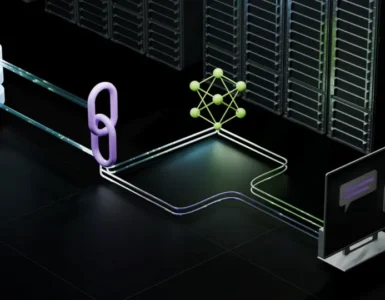Volvo Group is a clear pioneer with data and AI. We’ve already seen how Volvo Car Group in reinventing the self-driving cars department on daily bases. AI and innovation are the springboards for Volvo Group in all their operations focusing on connectivity, electromobility and automation.
But one of the big challenges that stand in the way of gaining value from data is the communication of the data value to stakeholders and employees.
The challenge with data-driven innovation at Volvo Group
Fredrik Moeschlin, Senior Analytics Manager at Volvo Group Connected Solutions, presented what the real challenge with driving innovation through data is at Volvo Group. And it’s not the technical data science or machine learning codes, the data wrangling, data preparation — it’s communication where the nub of the problem lies, revealed Fredrik. More precisely how to communicate what they are doing in terms of data science and machine learning.


Let’s imagine a situation where a data scientist works on solving a gearbox problem in the trucks with the help of field data and has to communicate his findings to the gearbox engineer with over 30 years of experience. There are two scenarios as the outcome: the best case is the data scientist gets several additional questions by the engineer they can work on; while the worst case is getting disbelieving looks and snarky comments questioning the data scientist’s reliability.
The solution to successfully communicating the power of data has been known as early as Ancient Greece – literally. Fredrik states that the Ancient Greeks already knew how to convince the gearbox engineer at Volvo Group to believe in data science findings. The secret is in having all three of logos, ethos and pathos while communicating. Logos refers to relying on logic and rationale, ethos alludes to trust and reliability and pathos refers to the feelings and passion of what the work.
As data scientist are people of the reason, they usually rely on logos to communicate their work and frequently forget about ethos and pathos. It’s important to make people trust they work with the right data and models (ethos) and package their work in such a way that is attractive.
Relying on the wisdom of the ancient Greeks, Volvo Groups turned to advanced visualisation tools to communicate data and analytics insights to their employees.


Volvo Group has nearly 100,000 employees, and most of them are not data scientists, but they need to understand how data can enable their work. This is where Volvo Group Connected Solutions find their place. One of the main focuses of their work are questions need to be addressed so they can properly communicate their findings and change operational models through data.


Data visualisation for better understanding
Fredrik in his presentation demonstrated a visualisation platform which helps employees understand the data they dispose of and get map projections for truck routes. The prototype solution is instrumental in showing people the possibilities with data.
Instead of data scientists explaining to engineers what the problems with a gearbox are like in the example above, the platform allows them to see for themselves actual data points that reveal the root cause and patterns of defects.
However, looking at patterns and projections presents is just constructing hypotheses. The real problem-solving comes from moving from hypothesis-driven work towards statistics and machine learning.
Certain features can be extracted from the connected data, such as driven access, road condition, acceleration, seasonality and braking, traffic. These features are combined to describe the data, and with the help of machine learning come up with predictions to describe issues.
But most importantly, the tool allows data scientist at Volvo to describe every step of their data work to employees in order to gain trust and encourage engagement. It’s also a tool that allows data scientists to understand employees pain points and types of answers they need, which requires a great deal of communication between all parties.


How to communicate the power of data
Fredrik summarises the three essential things to work on in order to efficiently get across the value of data in the organisation, at the same time keeping the three principles of logos, ethos and pathos.
Build trust
The key to acceptance is trust. And in order to gain trust in something one needs to understand it.
Self-driving trucks were something unheard of just a decade ago, but people are slowly getting used to the sight of autonomous trucks by trusting the technology that drives it. Trust is a process that requires building. Likewise, for working with data tools, people need to see and understand its value to accept it.
Establish communication
As a data scientist, putting yourself in your colleague’s shoes and understanding how they work, will help you figure out how your input through data can empower them.
Putting that extra touch
Simply asking if what you’re talking about or presenting at a meeting makes sense for your colleagues can go a long way. And of course, including passion in everything you do will certainly show in the final output. Fredrik gives an example of how he built several prototypes to convey the message and enable the organisation to realise what data is available, what value can be made out of it and how they can start working with it.














Add comment